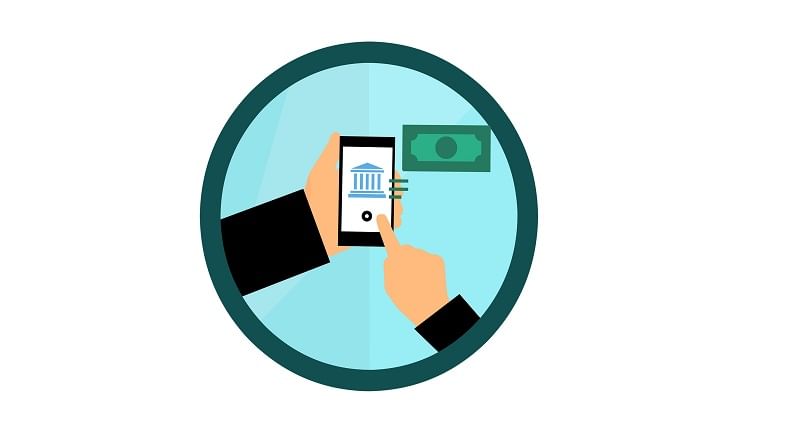How does open banking affect the end consumer?
Open banking is a model that allows banks to give data access to affiliated parties through an Application Programming Interface tool
- Satyajit Kanekar
- Last Updated : May 6, 2021, 14:52 IST

India’s banking industry is investing heavily in digital technologies to catch up with leading global competitors who offer a wide range of sophisticated services to their customers. Investment in new technology has never been this higher in the country. Open banking, although not an entirely new concept, is, therefore, gaining cognizance.
Open banking came from the idea of Open Innovation, coined by Henry Chesbrough, an organizational theorist, who said that any information or knowledge doesn’t belong to a singular entity and needs to be shared. This concept was later taken up by the banking sector as Open Banking, meaning banking for all or banking without boundaries.
Banks started opting for open banking to overcome the several challenges they were facing in modern times. They found themselves out of tune as consumer expectations increased and faster service became the need of the hour. After several financial crises, there was also a realization that banking concentration can be detrimental to systemic risk and competition. Thus, it meant that older banks did not have to compete hard for customers and felt no urgency to provide better services leveraged by technology.
On the other hand, new banks that came equipped with advanced technology to provide a better customer experience found it difficult to access the market and grow. As a result, customers did not get enough choice or control over their money or financial information.
Since then, efforts to introduce new initiatives by the banking regulators caught pace. One of these initiatives is open banking, which was executed through the Banking-as-a-Service concept.
Open banking is a model that allows banks to give data access to non-bank rivals (affiliated parties) through an Application Programming Interface (API) tool. That enables banks to deliver enhanced capabilities to their end customers – a more secure way to control financial data and its use, thereby enabling more personalized services. For businesses, it opens an avenue to provide varied innovative services such as money management, product comparison tools, and more!
On the banking side, before open banking started, most banks could not monetize customer data. Now, new fintech players can use data analytics to understand consumer behavior and provide a personalized recommendation engine. So, in practice, open banking companies can tap into the data and add more value to this win-win-win model, such as:
Aggregation services – These simply access and display your financial data from multiple providers offering greater convenience and efficiency.
Budgeting and debt management services – Here, fintech help consumers analyze their financial data directly.
Debt advisors, product comparison, and personal recommendation – High impact services such as these help consumers make better decisions financially and invest in instruments of an even higher value, something the consumer could not have deduced by themselves.
A direct impact of these services can be seen in the way customers have control over their financial data and have access to better services that are future-ready. A foreseeable trickle-down effect on the industry, as a whole, would be the generation of new revenue streams by creating a sustainable model.
The Benefit of Choice The traditional banking system provides a limited set of services to its customers. Therefore, when open banking gives financial control in the hands of the consumer, the overall customer experience is bound to grow.
Open banking allows customers to choose from multiple service providers for any service from the many apps according to ones’ financial planning and experiences. It also empowers customers to take charge and make informed decisions, a step that can improve financial inclusion in the country. Some specific benefits of open banking for the end consumer are:
Easy payment options: Open banking APIs enable queue-less payments. We are already witnessing a surge in the adoption of platforms such as Google Pay, Samsung Pay, Apple Pay, PayTM, and more that allow digital payment through smartphones. The concept of a cashless society may come to fruition very soon.
Unification of accounts: The open banking infrastructure provides a cohesive online and in-person payment method for instant access to market investments, bank accounts, and more! So, it’s a matter of a single click. Having one account also means having a secure account that can be safeguarded from theft.
Product comparison: Consumers can now leverage the power of information by comparing products to make better credit decisions, thereby allowing instant credit and remittances. It will also benefit the industry as there would be fewer defaulters as consumers would make informed decisions with greater visibility into spending habits and behaviors.
The Flip Side While open banking will disrupt the traditional banking system, it is here to stay. And with new technology comes the possibility of new vulnerabilities as the threat landscape expands to accommodate innovation. One of the greatest challenges regulators face now is assessing the risks with the mixing of open banking API infrastructure, financial data, and associated tech. We have to wait and watch to see how it works in the future.
(The writer is Co-founder & CEO, Mobileware Technologies. Views expressed are personal)
Download Money9 App for the latest updates on Personal Finance.
Related
- इंडसइंड बैंक का बड़ा कदम, डेरिवेटिव अकाउंट में मिली गड़बडि़यों की वजह पता करने के लिए पेशेवर कंपनी की नियुक्त
- बैंक जमा पर बीमा की सीमा बढ़ाने से बैंकों के मुनाफे पर होगा असरः इक्रा
- बैंक डूबा तो अब मिलेंगे 8-12 लाख! सरकार बढ़ा सकती है इंश्योरेंस लिमिट
- बंद हो गया बैंक अकाउंट, SIP भी है लिंक तो तुरंत करें ये 5 काम
- J&K बैंक को SEBI की चेतावनी, 1 फीसदी से ज्यादा टूटा शेयर; जानें पूरा मामला
- PhonePe vs. GPay: Indian digital payment giants up for a tussle

